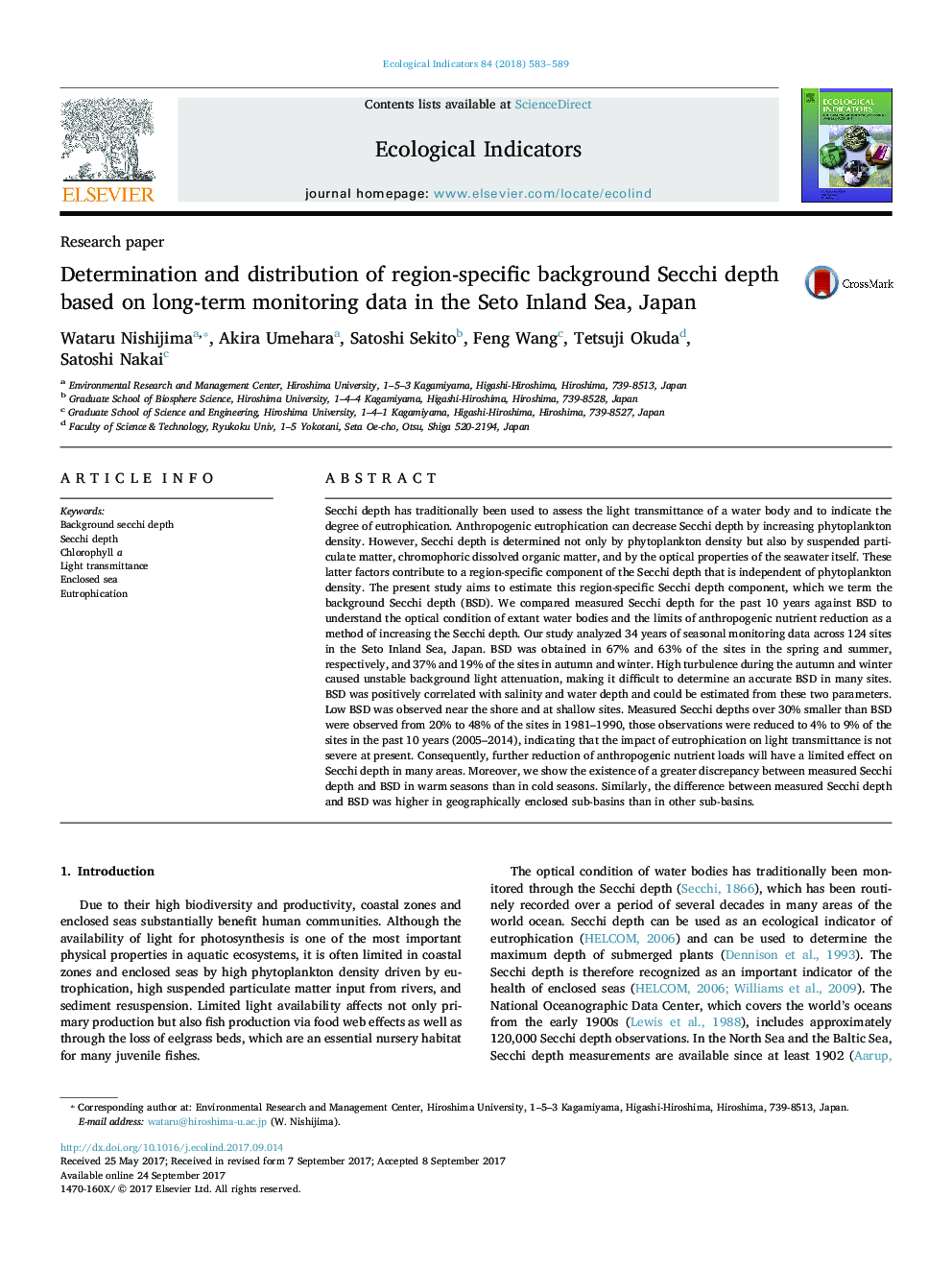| کد مقاله | کد نشریه | سال انتشار | مقاله انگلیسی | نسخه تمام متن |
|---|---|---|---|---|
| 5741582 | 1617118 | 2018 | 7 صفحه PDF | دانلود رایگان |

- The region-specific background Secchi depth (BSD) was determined.
- Low BSD was observed near the shore and at shallow sites.
- Spatial distribution of BSD was compared against measured Secchi depth.
- Difference between measured Secchi depth and BSD was high in enclosed sub-basins.
- Impact of eutrophication on light transmittance is not severe in Seto Inland Sea.
Secchi depth has traditionally been used to assess the light transmittance of a water body and to indicate the degree of eutrophication. Anthropogenic eutrophication can decrease Secchi depth by increasing phytoplankton density. However, Secchi depth is determined not only by phytoplankton density but also by suspended particulate matter, chromophoric dissolved organic matter, and by the optical properties of the seawater itself. These latter factors contribute to a region-specific component of the Secchi depth that is independent of phytoplankton density. The present study aims to estimate this region-specific Secchi depth component, which we term the background Secchi depth (BSD). We compared measured Secchi depth for the past 10 years against BSD to understand the optical condition of extant water bodies and the limits of anthropogenic nutrient reduction as a method of increasing the Secchi depth. Our study analyzed 34 years of seasonal monitoring data across 124 sites in the Seto Inland Sea, Japan. BSD was obtained in 67% and 63% of the sites in the spring and summer, respectively, and 37% and 19% of the sites in autumn and winter. High turbulence during the autumn and winter caused unstable background light attenuation, making it difficult to determine an accurate BSD in many sites. BSD was positively correlated with salinity and water depth and could be estimated from these two parameters. Low BSD was observed near the shore and at shallow sites. Measured Secchi depths over 30% smaller than BSD were observed from 20% to 48% of the sites in 1981-1990, those observations were reduced to 4% to 9% of the sites in the past 10 years (2005-2014), indicating that the impact of eutrophication on light transmittance is not severe at present. Consequently, further reduction of anthropogenic nutrient loads will have a limited effect on Secchi depth in many areas. Moreover, we show the existence of a greater discrepancy between measured Secchi depth and BSD in warm seasons than in cold seasons. Similarly, the difference between measured Secchi depth and BSD was higher in geographically enclosed sub-basins than in other sub-basins.
240
Journal: Ecological Indicators - Volume 84, January 2018, Pages 583-589